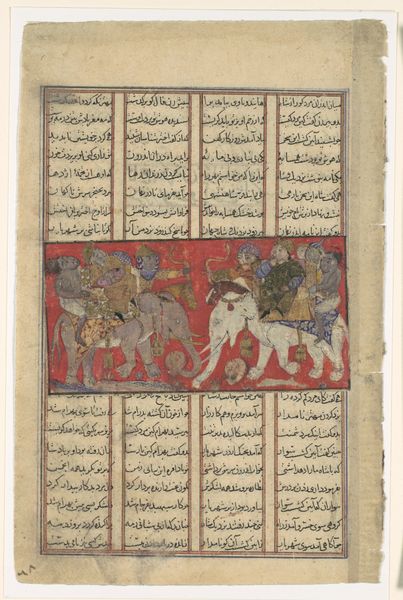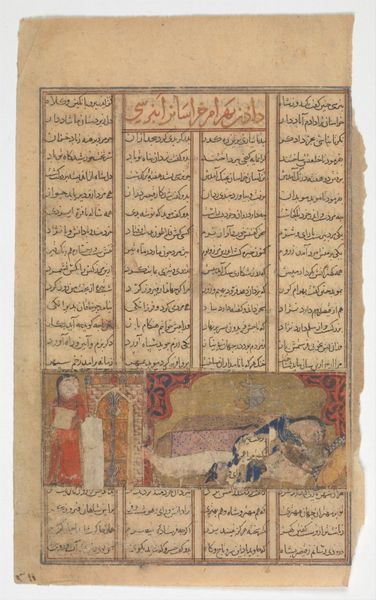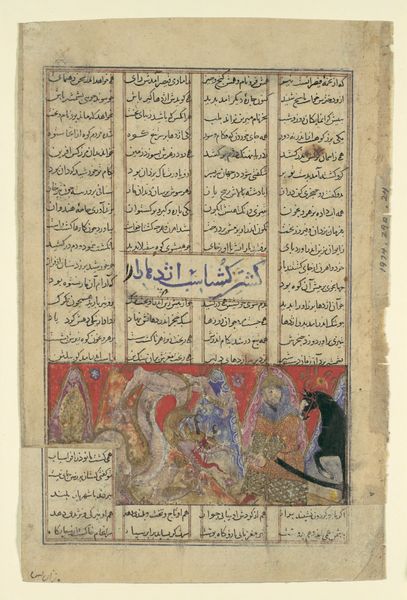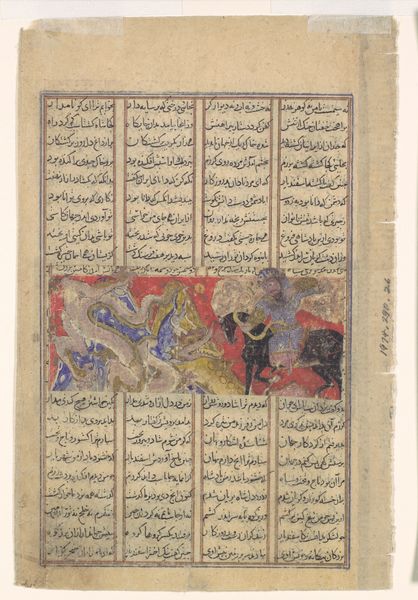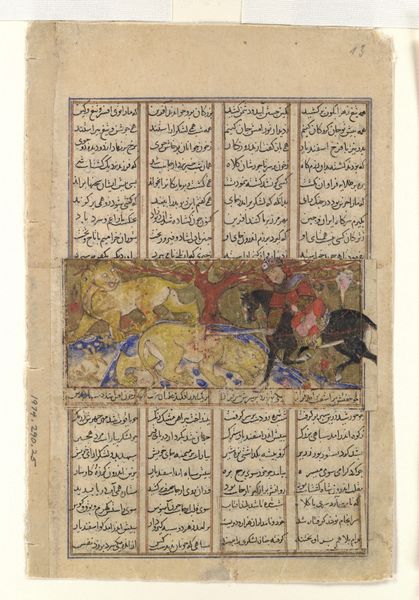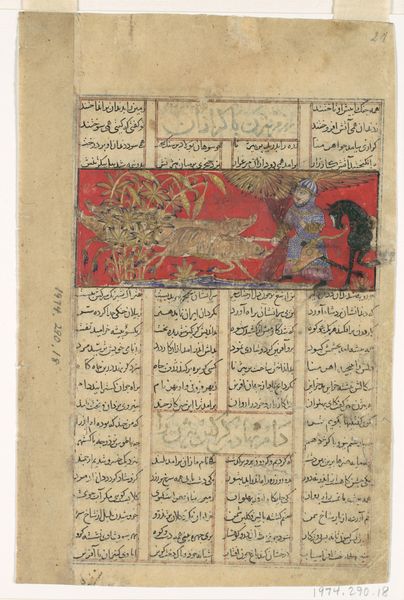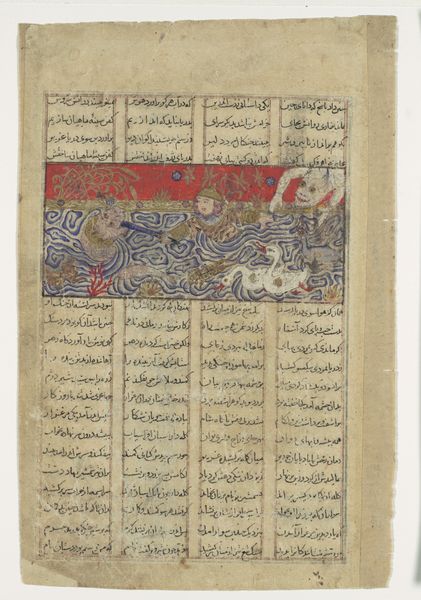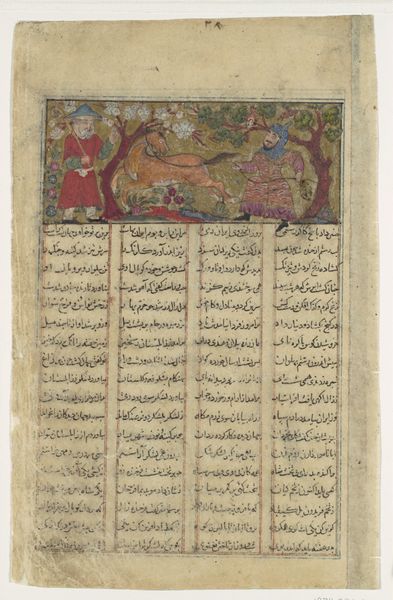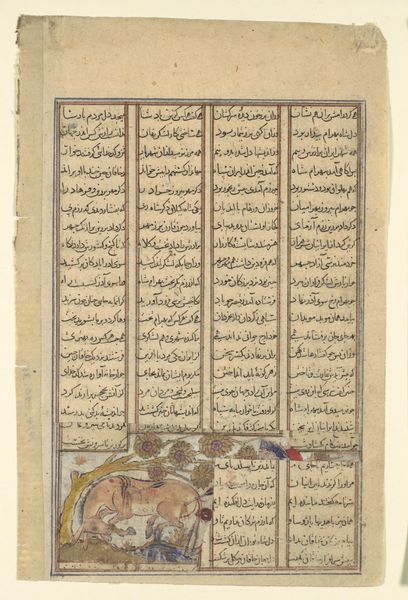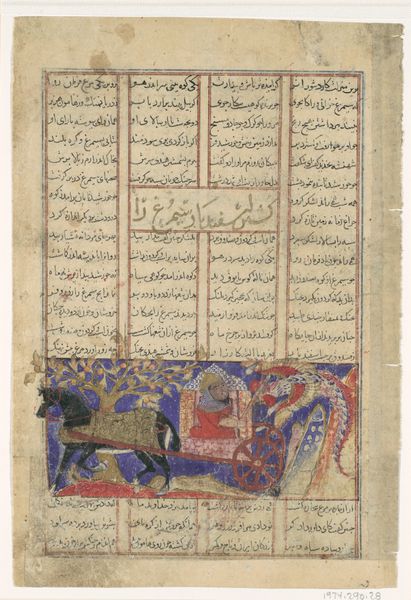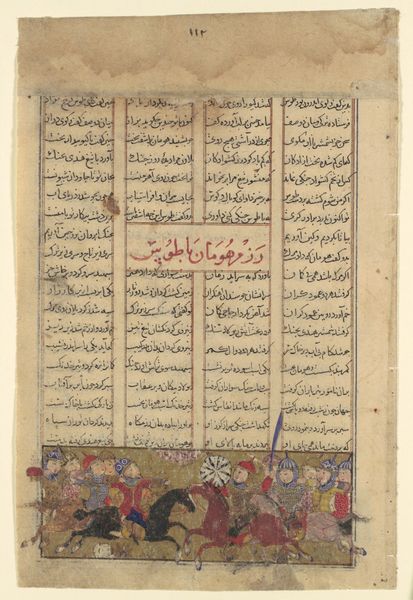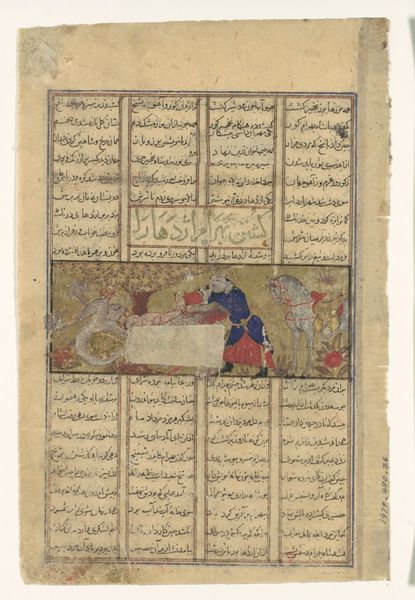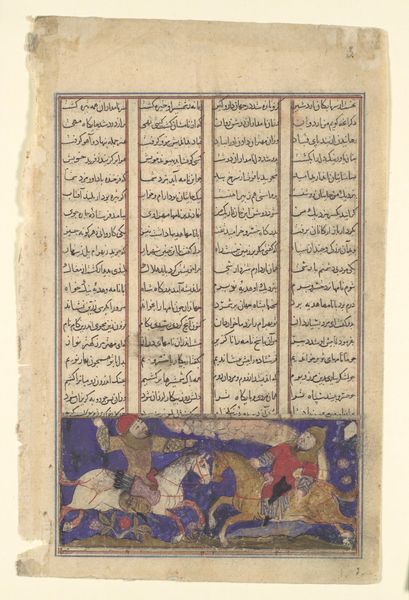
"Rustam Avenges his Own Impending Death", Folio from a Shahnama (Book of Kings) 1305 - 1365
0:00
0:00
painting, paper, ink
#
narrative-art
#
painting
#
landscape
#
figuration
#
paper
#
ink
#
islamic-art
#
miniature
Dimensions: Page: H. 8 in. (20.3 cm) W. 5 1/4 in. (13.3 cm) Painting: H. 1 7/8 in. (4.8 cm) W. 4 5/16 in. (10.9 cm)
Copyright: Public Domain
Editor: So here we have "Rustam Avenges his Own Impending Death," a painting from a Shahnama, dating from around 1305 to 1365. It's created with ink and pigments on paper. It's a whirlwind of action but also feels very self-contained. What do you see in this piece, considering its history? Curator: What I immediately notice is the way the artist interweaves the personal drama of Rustam with larger cultural and political anxieties of the time. Look at how Rustam, a legendary hero, is positioned. His personal fate is, in a way, symbolic of a culture confronting its own mortality. The scene speaks to the complexities of identity, doesn’t it? A hero grappling with his own end mirrors societal concerns about legacy and power. Does the use of the miniature format, containing this epic within defined borders, also say something about controlling narratives and destinies? Editor: I guess it’s about control, but also about containing something huge – like a whole epic poem – in something small. Do you think this piece challenged existing social norms or power structures at the time? Curator: Absolutely. By focusing on Rustam's internal struggle alongside the external battles, the painting subtly questions the nature of heroism and leadership itself. And how those depictions were used. Who was reading the Shahnama and how did they interpret Rustam's actions? What conversations were being had as courtly elites read it? Remember that artistic choices often reflect deeper political undercurrents. Editor: I hadn’t thought about it like that, as challenging leadership. But placing individual struggle alongside broader themes makes it seem more potent. Curator: Precisely! It underscores the intertwined nature of personal and political spheres, allowing us to engage with questions of agency, representation, and cultural identity. Editor: That connection between the personal and the political makes the piece feel surprisingly contemporary. Curator: Yes, seeing it through an intersectional lens, we recognize how art continually invites us to re-evaluate historical narratives through present-day concerns.
Comments
No comments
Be the first to comment and join the conversation on the ultimate creative platform.
